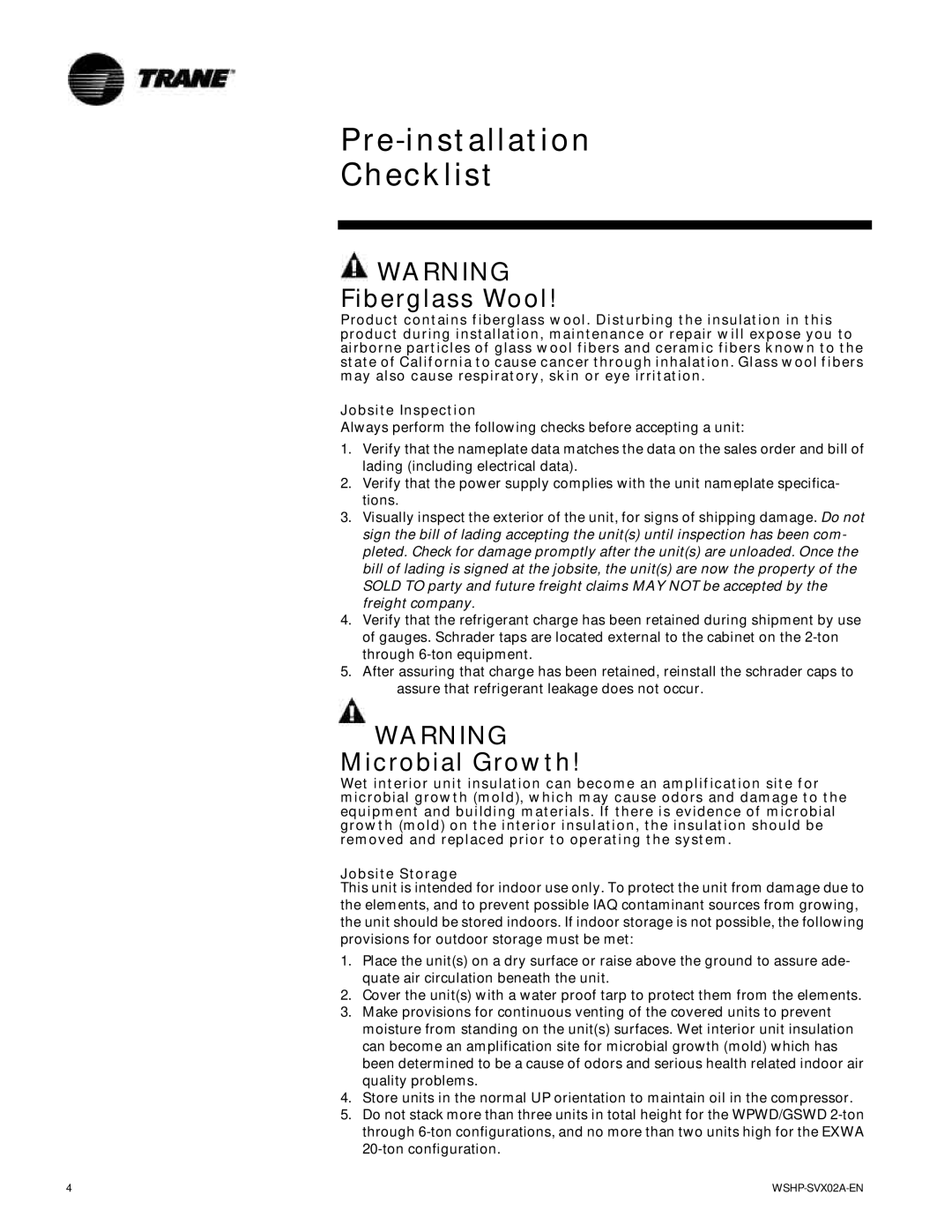GSWD, WPWD, EXWA specifications
Trane is a leading provider of heating, ventilation, and air conditioning (HVAC) systems, and their GSWD, WPWD, and EXWA series are some of the most innovative and efficient products available in the market. These product lines are designed to meet diverse HVAC needs by offering distinctive features, cutting-edge technologies, and remarkable performance characteristics.The Trane GSWD series is known for its robust design and versatility, making it ideal for various commercial applications. One of the standout features of GSWD units is their modular design, which allows for easy installation and scalability. They are equipped with high-efficiency compressors that contribute to energy savings while ensuring optimal cooling performance. The GSWD series also includes advanced control systems, which enable precise temperature management and system monitoring, leading to improved comfort and reduced operating costs.
On the other hand, the Trane WPWD series focuses on delivering exceptional water-source heat pump solutions. These units stand out for their ability to harness energy from renewable water sources, thereby offering environmentally friendly operation. With a focus on energy efficiency, the WPWD models utilize variable-speed technology that adjusts the compressor's output based on demand, resulting in significant energy savings. Additionally, these models are designed to operate quietly, which enhances the overall comfort of indoor environments.
The EXWA series represents Trane's commitment to innovation in air-to-water heat pump technology. Featuring advanced inverter technology, the EXWA units can efficiently operate across a wide range of environmental conditions. This allows them to deliver reliable heating and cooling performance without compromising efficiency. The EXWA series also emphasizes ease of maintenance, with accessible components designed for quick servicing and reduced downtime.
All three series prioritize user-friendly interfaces, enabling easy system operation and monitoring. Trane incorporates smart technology that promotes connectivity and integration with building management systems, making it easier for operators to manage HVAC systems efficiently.
In summary, the Trane GSWD, WPWD, and EXWA series provide innovative HVAC solutions characterized by energy efficiency, advanced technology, and user-friendly features. Their unique designs cater to various applications, ensuring that they meet modern building requirements while being environmentally responsible and cost-effective. Trane continues to lead the way in HVAC technology, setting benchmarks for performance, reliability, and sustainability in the industry.

